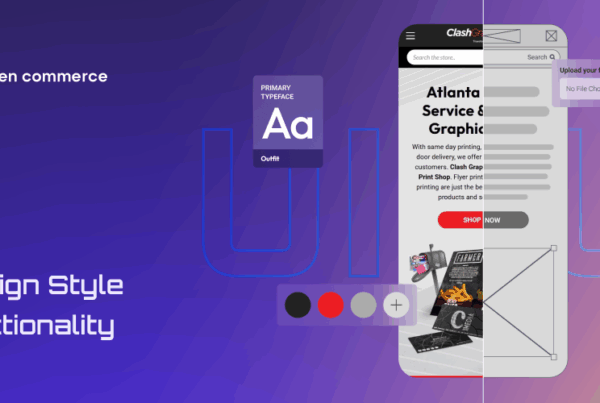Welcome to the world of e-commerce, where SEO and UX design are two sides of the same coin. Your website should be search engine optimized and straightforward.
You want your customers to find what they’re looking for effortlessly while also improving your ranking on search engines. But how do you optimize your e-commerce site for both SEO and UX design?
We’ll dive into the basics of both fields and provide tips on how to optimize them together seamlessly. Grab your favorite coffee, and let’s get rolling!
Understand the Basics of SEO and UX Design
SEO and UX design are two fundamental aspects that every e-commerce site owner should understand. SEO involves optimizing your website’s content, structure, and backend to rank higher on search engines like Google. Meanwhile, UX design is about creating a user-friendly interface and enhancing the overall customer experience.
To achieve success in e-commerce, you need both SEO and UX design working together harmoniously. Without proper optimization for search engines, even the best-designed website won’t attract enough traffic to generate sales or revenue. Similarly, a poorly designed website can turn away visitors no matter how well it ranks on search engine results pages.
Take an integrated approach when developing your e-commerce site by ensuring that both SEO and UX design are given equal attention from the outset of the project. Make sure that your website’s layout is intuitive for users while also being optimized with keywords relevant to your industry.
Deeply understanding SEO and UX design provides a strong foundation upon which you can build a successful e-commerce business.
How to Optimize Your E-Commerce Site’s SEO
Consider these factors when optimizing your e-commerce site.
- Clear Structure: Your website must have a clear structure, so search engines and users can navigate it easily.
- Unique Titles and Meta Descriptions: Ensure that the pages on your site have unique titles and meta descriptions that accurately reflect their content. This helps with SEO and guarantees a better user experience as visitors can understand each page.
- Keyword Research: Conduct keyword research to know which terms potential customers are searching for regarding your goods. Once you have these keywords, use them appropriately throughout your site – don’t overdo it and get penalized by search engines.
- High Quality Images: Another consideration is the importance of high quality images. These can help improve both rankings and conversions as they provide valuable information about the products on offer while also showcasing them in the best possible light.
Taking these steps improves the visibility of your e-commerce site in search results – helping more people discover you!
How to Optimize Your E-Commerce Site’s UX Design
Optimizing your e-commerce site’s UX design is essential for boosting conversions and improving user satisfaction. Here are tips for optimizing your website’s UX:
Firstly, your website needs a clear and intuitive navigation system. Use descriptive labels for categories and subcategories so users can easily identify things.
Secondly, make sure your product pages have high-quality images with zoom features. Customers want to see what they’re buying in detail before making a purchase.
Thirdly, simplify the checkout process by minimizing steps as much as possible. Offer multiple payment options such as PayPal or credit card payments to cater to different preferences.
Fourthly, provide helpful customer support options on every page of the website. Include an FAQ section or chatbot that can answer common questions quickly.
What to Avoid When Optimizing Your E-Commerce Site
When optimizing your e-commerce site, be aware of what to avoid to prevent any negative impact on SEO and UX. Here are the things you should keep an eye out for:
1. Avoid using duplicate content as this can lead to penalties from search engines. Ensure that all product descriptions and meta tags are unique across your website.
2. Don’t neglect the importance of page load speed. Slow-loading pages can negatively affect user experience, leading to higher bounce rates and lower conversions. Optimize images and reduce code bloat wherever possible.
2. Steer clear of using pop-ups excessively or in a way that interrupts the user journey. Pop-ups can be effective when used strategically but overusing them can frustrate users.
4. Try not to use complex URLs with unnecessary parameters or symbols as they might confuse search engine crawlers and decrease visibility in search results pages.
5. Avoid using misleading or irrelevant anchor texts as this could result in a poor user experience or even harm your website’s ranking potential by decreasing its credibility.
The Importance of Mobile Optimization
Mobile optimization is crucial for any e-commerce site. With the increasing use of smartphones, your site should easily be accessed on smaller devices. A mobile-friendly design can improve user experience and boost your SEO rankings.
Responsive Design
One major aspect of mobile optimization is responsive design, which automatically adjusts the layout of a website depending on the device. This provides users a seamless experience whether they’re viewing your site on a desktop or smartphone.
Page Speed
Another key factor in mobile optimization is page speed. Mobile users expect sites to load quickly, so it’s essential to optimize images and minimize code. You’ll enhance user experience and increase the likelihood of customers staying on your site longer.
Appearance
In addition to these technical elements, it’s important to consider how content appears on smaller screens. Text should be easy to read without zooming in, and buttons should be large enough for fingers to tap accurately.
Prioritizing mobile optimization is critical for e-commerce success in today’s digital landscape.
Testing and Analytics
Testing and analytics are crucial components of optimizing your e-commerce site for both SEO and UX design. Testing allows you to evaluate the effectiveness of different strategies, while analytics provides valuable insights on user behavior.
A/B testing is a method where two versions of an element are compared. This can include testing variations in headlines, images, calls-to-action, and more.
Google Analytics provides data on how users’ behavior. This includes metrics such as bounce rate, time spent on page, and conversion rates. Analyzing this data can identify areas that need improvement and make informed decisions about changes to your site.
Regularly test and analyze your e-commerce site to ensure it remains optimized. Continual optimization will lead to increased traffic, higher engagement rates, and ultimately more conversions for your business.
Avoiding common mistakes such as keyword stuffing or overwhelming users with too much information on one page can create an optimal shopping experience that will keep customers coming back.
Lastly remember to test different approaches using analytics tools like Google Analytics so you can continue improving your e-commerce site’s performance over time.
With the help of our developers, designers, and marketers – AOC, you’ll be achieving success in e-commerce.












